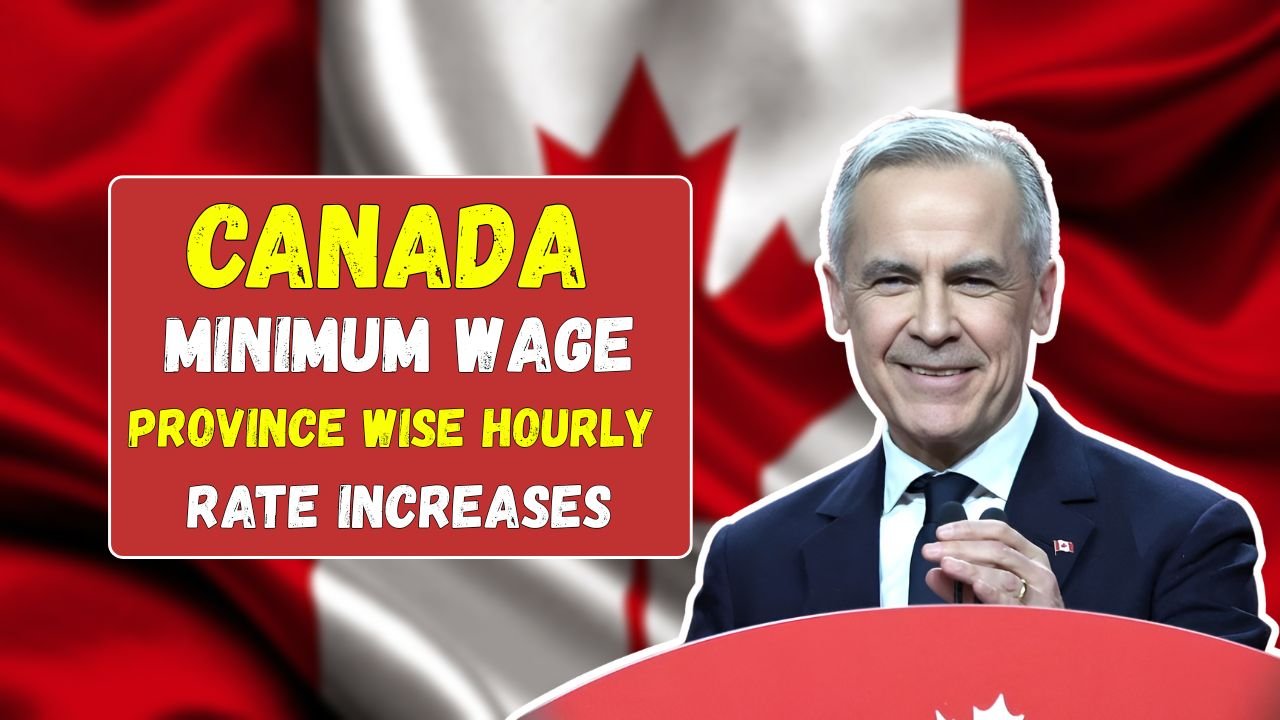Join on WhatsApp
Get the latest updates directly on WhatsApp – motivation, news & more!
The year 2025 brings important changes for workers across Canada as new minimum wage increases take effect in nearly every province and territory. These adjustments are part of the government’s effort to keep pace with inflation and ensure fair pay for workers in industries such as retail, hospitality, and service sectors where many employees earn entry-level wages. Understanding these changes is essential not only for employees but also for employers who need to update payroll systems and budgets.
Why Minimum Wage Increases Matter
Minimum wage is the lowest hourly rate an employer can legally pay a worker. It plays a critical role in ensuring a basic standard of living, particularly for low-income households. Over the past few years, rising costs of housing, food, and utilities have created pressure on governments to raise wages more regularly.
By 2025, these new increases are designed to support workers while balancing the economic realities faced by businesses. The goal is to reduce financial stress for employees without creating undue hardship for employers.
Federal Minimum Wage in 2025
The federal minimum wage, which applies to employees in federally regulated sectors such as banking, telecommunications, and postal services, is set to increase to 17.20 Canadian dollars per hour in 2025. This rate acts as a benchmark, but most provinces and territories set their own wages based on local economic conditions.
Province-Wise Minimum Wage Updates
Each province and territory in Canada has announced its own changes for 2025. Here is a breakdown of the new rates and how they compare to the previous year.
Ontario
Ontario’s minimum wage will rise to 17.00 dollars per hour. The province continues its annual adjustment system, linking increases to inflation to provide stability for both workers and businesses.
British Columbia
British Columbia will see one of the highest rates in the country, with wages increasing to 17.50 dollars per hour. The provincial government has stated that this move is part of its plan to address affordability challenges in Vancouver and other high-cost regions.
Alberta
Alberta will maintain its rate at 16.50 dollars per hour, but discussions continue about whether further adjustments will be needed to keep pace with inflation and living costs.
Quebec
Quebec is introducing a rise to 16.75 dollars per hour, with special adjustments for employees who receive tips. The province emphasises that the change is designed to support service industry workers who often rely on variable incomes.
Manitoba
Manitoba will raise its minimum wage to 15.90 dollars per hour, continuing its effort to close the gap with the national average and support workers in agriculture and retail sectors.
Saskatchewan
Saskatchewan’s rate will move up to 15.65 dollars per hour. This represents a significant step forward for the province, which had some of the lowest wages just a few years ago.
Atlantic Provinces
Nova Scotia, New Brunswick, Prince Edward Island, and Newfoundland and Labrador are also introducing increases, with hourly wages ranging between 15.50 and 16.20 dollars depending on the province. Each government has highlighted the importance of supporting workers in seasonal industries such as fishing and tourism.
Northern Territories
Yukon, Northwest Territories, and Nunavut, where the cost of living is much higher than the national average, will continue to lead with some of the strongest minimum wage rates. In 2025, Nunavut will raise its rate to 19.00 dollars per hour, reflecting the unique challenges of remote communities.
Impact on Workers
For workers, these increases mean higher take-home pay, which can ease the burden of everyday expenses. Employees in entry-level positions, part-time jobs, or industries with historically low wages stand to benefit the most. Many see the changes as a step toward improving financial stability and reducing reliance on social assistance programs.
Impact on Employers
While the increases are good news for workers, employers face the challenge of balancing payroll costs with business sustainability. Small businesses in particular may need to adjust pricing, staffing, or operational practices to manage the additional expenses. Some industry groups have expressed concern that rapid wage increases could reduce job opportunities, though others argue that fairer wages can boost employee retention and productivity.
Broader Economic Implications
Economists suggest that raising the minimum wage can have both positive and negative effects on the economy. On the one hand, higher wages increase consumer spending power, which supports local businesses and stimulates growth. On the other hand, if businesses struggle to absorb the costs, they may reduce hours, cut jobs, or pass expenses onto customers through higher prices.
The balance between these outcomes will vary across regions, depending on local living costs, industry structures, and economic conditions.
Looking Ahead
As of 2025, Canada is entering a new phase of wage policy that closely ties adjustments to inflation and affordability. Governments are likely to continue reviewing wages annually to ensure that workers are not left behind during periods of economic change. For employees, the message is clear: staying informed about provincial updates is essential for understanding rights and entitlements. Employers, meanwhile, must remain proactive in adapting payroll systems to meet new requirements.
Conclusion
The Canada minimum wage increases in 2025 mark an important development for workers across the country. By introducing province-wise hourly adjustments, the government seeks to ensure fair pay while addressing regional differences in living costs. For millions of Canadians, these changes mean greater financial security, while for employers, they present both challenges and opportunities. As the new rules take effect, the balance between supporting workers and maintaining business sustainability will remain a key focus for policymakers and communities nationwide.

